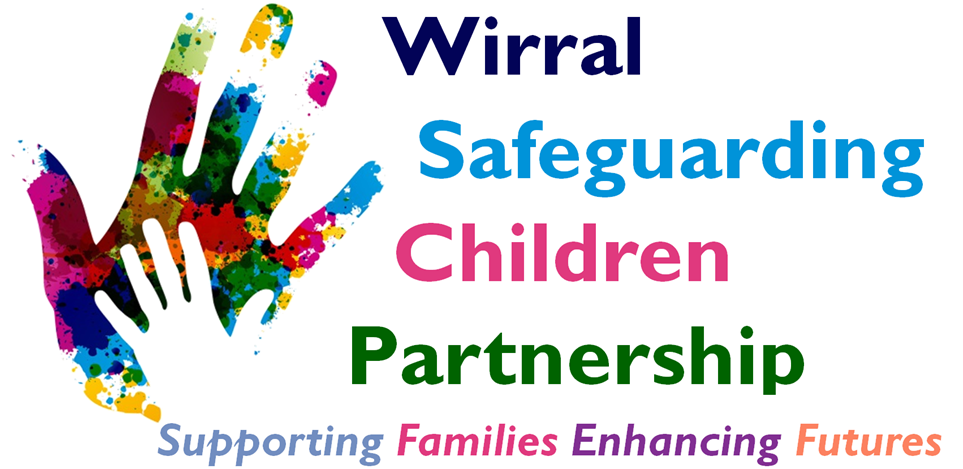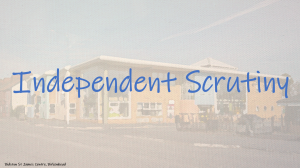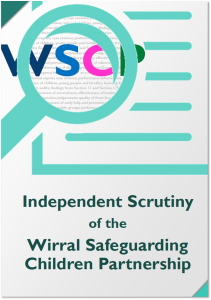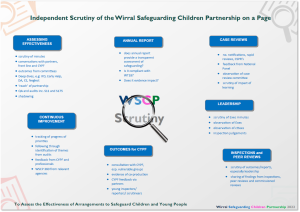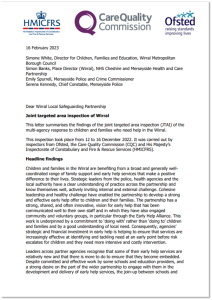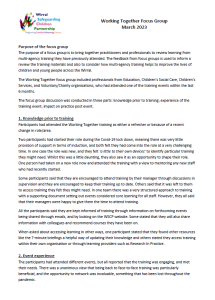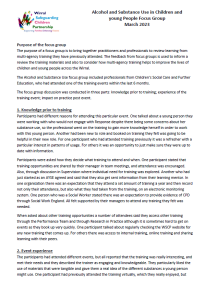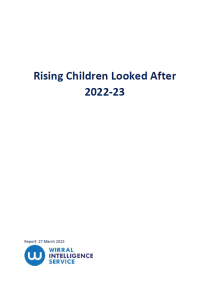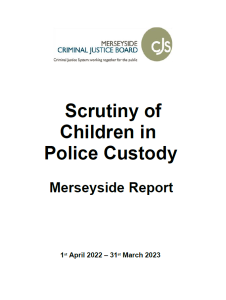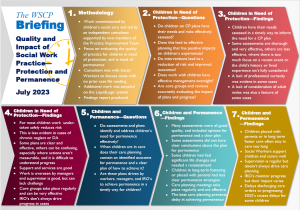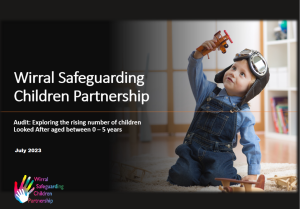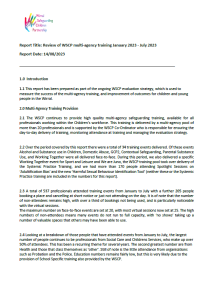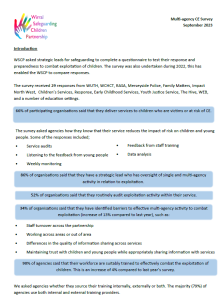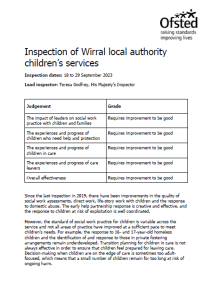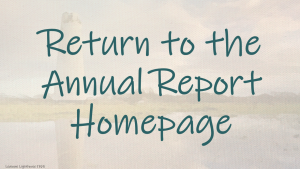Independent Scrutiny
Chapter Contents
- WSCP Independent Scrutiny Model
- Independent Scrutiny of WSCP and Annual Report
- Examples and Reports of Local Independent Scrutiny of Practice, including Inspection Findings
- SEND Young Inspectors
Independent Scrutiny
WSCP Independent Scrutiny Model
The requirement for independent scrutiny of multi-agency safeguarding arrangements is defined in the statutory guidance Working Together to Safeguard Children. The role of independent scrutiny is to provide assurance in judging the effectiveness of multi-agency arrangements to safeguard and promote the welfare of all children in a local area, including arrangements to identify and review serious child safeguarding cases. This independent scrutiny will be part of a wider system which includes the independent inspectorates’ single assessment of the individual safeguarding partners and the Joint Targeted Area Inspections.
Whilst the decision on how best to implement a robust system of independent scrutiny is to be made locally, safeguarding partners should ensure that the scrutiny is objective, acts as a constructive critical friend and promotes reflection to drive continuous improvement.
Independent scrutiny should consider how effectively the arrangements are working for children and families as well as for practitioners, and how well the safeguarding partners are providing strong leadership and agree with the safeguarding partners how this will be reported.
Safeguarding partnerships are required to set out their plans for independent scrutiny in their published arrangements and include how the arrangements will be reviewed; and how any recommendations will be taken forward. This might include, for example, the process and timescales for ongoing review of the arrangements.
Safeguarding partners should also agree arrangements for independent scrutiny of their annual report.
The WSCP’s model of independent scrutiny is set out in the document below. Our model does not rely on a single scrutineer, but rather gathers information from a variety of sources to help us understand the strengths and weaknesses of the local safeguarding system.
Further information and examples of scrutiny activity can be found on the WSCP website here
A simple representation of the scrutiny model on a single page is available below:
Independent Scrutiny of WSCP
The annual report is designed to provide an honest and transparent assessment of the effectiveness of safeguarding activity, and in doing so it includes a lot of information drawn from the breadth of practice from statutory case reviews, to the provision of training, to reports about managing allegations, to audits, and to case studies.
In assessing whether the annual report fulfills this function, it, and the wider function of the Wirral Safeguarding Children Partnership is subject to independent scrutiny, and a summary of the latest independent scrutiny report is published below.
Independent Scrutiny Report
The WSCP Executive commissioned Caroline Mckenna, an independent safeguarding consultant to undertake an independent scrutiny review of the WSCP between March and July 2024. As part of the scrutiny Caroline reviewed WSCP documentation, met with members of the Executive, committee chairs and WSCP staff, and observed a range of Executive and committee meetings.
The terms of reference for the scrutiny was set around the following areas:
- Does the annual report provide evidence of the effectiveness of the arrangements and demonstrate effective multi-agency working?
- Does the report show compliance with statutory child safeguarding practice review requirements and demonstrate the identification, dissemination and impact of learning, and recommendations?
- Does the report provide evidence of the impact of the work of safeguarding partners to safeguard and promote the welfare of children?
- Does the report provide evidence of training delivery, attendance, evaluation and impact?
- Does the report provide evidence of a business plan, and progress against agreed priority areas and outcomes/impact of work?
- Does the report provide evidence of how the views of children and families have been sought and have influenced multi-agency working?
- Do the statutory safeguarding partners demonstrate ‘ownership’ of the report, including an understanding of the quality and impact of practice, the learning from statutory and local safeguarding reviews, familiarity with the developing systemic model of practice, and
- Do they demonstrate an understanding of Wirral, and the findings from reviews, audits and performance information
Headline messages from the scrutiny report include:
- WSCP’s published arrangements including the framework are compliant with Working Together statutory guidance
- The structure includes various committees and work groups reporting into an Executive formed by the 3 statutory partners of the LA, Health Economy (Integrated Care Board), and Merseyside Police. The Executive also includes a Delegated Safeguarding Partner for Education as a recent addition
- Executive members know themselves well, and have well developed relationships
- The WSCP is funded by contributions (financial and in kind, e.g. chairing committees), but the budget faces significant pressures
- The WSCP is chaired on a rotational basis between the 3 statutory partners. The Director for Children, Families and Education (LA) is the current Partnership Chair
- A regional pan Merseyside safeguarding partnership board has recently been established and this will need to be included in the local arrangements
- The Executive is also considering the establishment of a local Board with wider membership to allow the Executive to concentrate on strategic safeguarding arrangements
- Committees and work groups are well led and have good multi-agency attendance. A wide breadth of data and performance information is presented and discussed but would benefit from specialist analysis
- The WSCP has a strong model of auditing, but audits and the wider working of the WSCP would benefit from a better understanding of the voice of children, young people and families. The WSCP understands this and it is an area of current development
- The multi-agency training offer from the WSCP is strong and extensive, and there are a variety of ways practitioners can access training and learning. The training offer includes provision of single agency training to education settings which is valued by local schools
- Partnership understanding of the thresholds of need is strong and the Integrated Front Door provides an effective response to contacts and referrals when there are concerns about the safety and welfare of children
- The case review function is well led by the multi-agency case review committee and statutory reviews are published in line with guidance. The WSCP should consider its commissioning arrangements to ensure they are updated to be compliant with Working Together 2023
- The WSCP is developing a bespoke scrutiny function which does not relay on a single scrutineer, but rather seeks to base scrutiny on the input of a wider number of independent scrutineers as well as local staff, children and families. The WSCP Executive are asked to assure themselves that this model of scrutiny is fully compliant with the requirement of Working Together 2023
- The annual report provides a comprehensive assessment of the strength of safeguarding arrangements and is well presented on the WSCP website. The report includes presentation of progress against priorities and clearly sets out the current and future priority areas of work. It was less clear in the report why and how the priorities are selected
- The scrutiny report recommends that the Executive take steps to ensure the budget ensures it can deliver its statutory duties and its ambitions
- In conclusion, the scrutiny of WSCP arrangements and effectiveness of these has identified commendable safeguarding practices across the partnership demonstrating focussed effort. The WSCP has committed leaders who demonstrate they have children at the centre
Examples and Reports of the Local Independent Scrutiny of Practice
Joint Targeted Area Inspection of Early Help December 2022
In December 2022 the partnership was subject to a Joint Targeted Area Inspection undertaken by Ofsted (for the Local Authority), The Care Quality Commission (for the Health economy), and His Majesty’s Inspectorate of Constabulary and Fire and Rescue Services (for the police).
Purpose
The purpose of the inspection was to test how effective our local arrangements were to support children and families who require early help support. The inspection focused on the 3 statutory agencies of the Local Authority, Health Economy and Police, but also looked closely at the role played by other organisations who support families.
As part of the inspection, the strength of the Integrated Front Door, the quality and impact of front line services, the strength and effectiveness of assessments and plans and the quality of leadership and management were all examined.
JTAI inspections aren’t graded, but partnerships receive a letter providing a narrative summary of the inspection findings and highlighting any areas of concern.
Findings
The letter of findings following the inspection was positive and included the following:
‘Children and families in the Wirral are benefiting from a broad and generally well coordinated range of family support and early help services that make a positive difference to their lives’
‘Leadership and healthy challenge have enabled the partnership to develop a strong and effective early help offer to children and their families. The partnership has a strong, shared, and often innovative, vision for early help’
‘Early help workers’ support to children and their families is highly effective. They are skilled, insightful and knowledgeable. They know and understand the needs of children and families well’
‘Parents described practitioners as ‘a magic key’ to achieving improvements in their children’s lived experiences. They feel that practitioners are invested in them and show genuine warmth and care’
The inspection highlighted four main areas of strength:
- Senior leaders in partner agencies have a shared and well-developed vision for
early help in the Wirral. Staff across statutory and voluntary agencies have
understood and engaged with this. - There is a broad range of locality-based early help and family support services
available to children and their families that are making a positive difference. For
most children who receive services, risk is reduced and their day-to-day lives
improve. - A strong commitment to co-production and to engaging children and their
families means that both the overall range of services and individual children’s
packages of support are increasingly well matched to the needs of children and
families. - The integrated ‘front door’ that receives referrals about children who may be in
need, or require early help, does well in ensuring that children receive timely help
and support that is well matched to their individual needs.
As well as providing much to celebrate the inspection also highlighted four areas of improvement:
- How effectively the early help offer is further developed to ensure greater
consistency of access for children across the local authority area. - The proportion of children receiving early help who benefit from a coordinated
multi-agency plan to coordinate that support and to help ensure that it is as
effective as possible. - How well the early help needs of children with special educational needs and/or
disabilities are met. - The coordination of early help between education providers and the wider
partnership.
Next Steps
In response to the inspection findings the WSCP has developed a multi-agency action plan setting out how we, as a partnership, are addressing the identified areas of improvement. The action plan is scrutinised by the WSCP Executive and periodically shared with Ofsted until all actions have been completed.
Inspection Letter
The formal letter of findings published in February 2023 can be found below:
Working Together Training Focus Group, March 2023
Alcohol and Substance Misuse Focus Group, March 2023
Rising Children Looked After, Wirral Intelligence Service Report, March 2023:
Section 11/175 Headline Findings, May 2023
Scrutiny report about children detained in custody, June 2023:
Quality and Impact of Social Work Practice 0n Children in Need of Protection and Children in Need of Permanence, 7 Minute Briefing, July 2023:
Rising Children Looked After WSCP Report, July 2023:
WSCP Training Report, August 2023:
Child Exploitation Survey, September 2023:
Inspection of Wirral Local Authority Children’s Services (ILACS), 18th – 29th September 2023
In September 2023 the Local Authority’s children’s services department was subject to a full ILACS inspection by Ofsted. The previous inspection had been undertaken in 2019 and at that time children’s services were found to be rapidly improving and judged as Requires improvement to be good.
Purpose
The purpose of the inspection was to test the effectiveness of the local authority’s services arrangements in four areas:
• the quality of help and protect for children
• the experiences and progress of children in care wherever they live, including those children who return home
• the arrangements for permanence for children who are looked after, including adoption
• the experiences and progress of care leavers
As part of the inspection, the inspection team reviewed cases, met with staff at all levels, spoke with young people, parents and carers, visited the Integrated Front Door and a variety of settings, held focus groups and reviewed electronic records.
Whilst the inspection isn’t primarily looking at the quality of multi-agency arrangements, in the same way as a JTAI inspection does, it does provide insight into the health of wider arrangements to keep children safe.
Findings
The judgements for each part of the inspection are set out below. The overall judgement for effectiveness was: Requires improvement to be good. This means that all areas of practice fulfil their statutory requirements, and children in Wirral are kept safe. However, there are some weaknesses in different areas of practice, and the quality of practice remains inconsistent.
Judgement Area
The impact of leaders on social work practice with children and families
Grade
Requires Improvement to be good
Judgement Area
The experiences and progress of children who need help and protection
Grade
Requires Improvement to be good
Judgement Area
The experiences and progress of children in care
Grade
Requires Improvement to be good
Judgement Area
The experiences and progress of care leavers
Grade
Requires Improvement to be good
The inspection included a number of areas of strength:
- The effectiveness of early help services, and the swift identification and response to need
- The effective response to children when risk escalates
- The effectiveness of the Integrated Front Door (IFD) and good understanding of thresholds by partner agencies
- The effective recognition and response to cases of domestic abuse
- The effective recognition and multi-agency response to children at risk of exploitation
- The consistency of relationships between disabled children and social workers
- The effective process for the management of allegations
- The improving relationships with schools
The inspection also highlighted seven areas for improvement:
- The response to 16- and 17-year-old homeless children, to ensure that they are made aware of their rights and entitlements.
- The awareness-raising and identification of, and response to, children living in private fostering arrangements.
- The quality of decision-making, to ensure that children come into care in a timely way.
- The timely progression of permanence plans for children, to ensure that they are not subject to statutory intervention for too long.
- Escalation by IROs, to robustly challenge plans for children.
- Transition planning for 16- and 17-year-old children in care, to ensure that they feel better prepared for leaving care.
- The offer to care leavers so that it is consistently accessible and understood to ensure that all care leavers receive their full entitlements.
Next Steps
In response to the inspection findings the LA is required to develop an improvement plan, setting out how the 7 areas for improvement will be addressed. The action plan will be scrutinised annually by Ofsted and will form part of areas for scrutiny at future inspections.
Inspection Report
The inspection report was published by Ofsted in January 2024 and is available below.
SEND Young Inspectors
In 2023 the Participation and Engagement (P &E) Team were commissioned to complete a project to train and empower a group of young people to become young inspectors, who could scrutinise the local provision of services in the local area to check whether they are child and young person friendly, and fit for purpose.
The project had a focus on provision for SEND (special educational needs and disabilities) services, as recent feedback had highlighted difficulties some young people had faced in accessing positive experiences.
Before the young inspectors began their inspection activity and visits, they met once a week with staff from the P&E Team to learn and hone new skills and consider how best to approach being a young inspector. The training sessions included considering the importance of being a young inspector and inspection, worries and anxieties they might have, communication skills and questioning techniques, the rights of children – including disability rights and the Equality Act, inclusive practice and safeguarding, and reflection. The group also developed their own quality Kite Mark to award to organisations and services who delivered to a high standard.
Once trained the young inspectors began their first inspection of services who were commissioned to support short breaks for children with SEND. The inspectors developed a simple inspection framework to ensure consistency of inspection across all services.
Six organisations were inspected, and each were visited by one or two young inspectors, who were accompanied by a member of the P&E Team. During each inspection the young inspectors spoke to staff, saw the facilities, reviewed relevant documents, and spoke to young people attending activities and their parents and carers. The inspections focused on the following areas:
- Health and Safety and Inclusion
- Safeguarding, Equality and Rights
- Membership of Young People
- Views of Young People and their Parents and Carers – is the activity enjoyable and positive and does it help build skills such as confidence and independence?
- Co-production – are young people involved in the design and review of activities?
Inspection Findings
The main findings from the inspections of the six organisations were:
- There is a great variety of sessions available, but less choice for wheel chair users
- Staff were very helpful and really professional, but not all them knew about or understood the needs of the young people in the various classes
- The feedback from the young people who attended the sessions was positive
- Parents and carers largely felt that the activities were positive, and that their children were being engaged and well looked after
- A lot of the activities were designed to help develop motor skills such as balance and coordination, the best sessions gave opportunities to build teamwork and confidence
- Record keeping varied across the organisations; some had very clear and visible policies, but others did not. Some sessions allowed parents/carers to take photos unchallenged
- In some of the groups the large numbers of young people meant that supervision wasn’t always 100%
- Some of the rooms were better suited to the activities taking place than others – in some of them the sound wasn’t very good and it was difficult to make out what staff were saying
- Some venues were thoughtfully set out with good images on the walls and helpful information about health and safety and safeguarding
- Overall, the sessions were really good and of great benefit to the young people who attended
Recommendations
Following consideration of the findings, the young inspectors made 15 recommendations to all organisations who deliver Short Breaks services to children and young people:
- Costing of project is assessed based on the client needs in the sessions to ensure that offers are based around the client’s needs and not on delivery of a session only
- Thorough booking system is required which should include the needs of client as part of the booking. Questions may seem rude but are necessary to get the best from the session for the client
- Ratio of staff must be relevant to the needs in the room. Maybe some kind of maths graph to make sure this is worked out right for the needs of client? So, there is a working process for organisations that ‘applying’ but without thought off ‘who’ they are delivering to and ‘how’ they will be delivering the session.
- All organisations should have a file with all qualifications of staff in and evidence of DBS checks
- We liked how one place had pictures of staff and their names and what they do on a board – this is good practice and all organisations should do the same
- Parents need a break. Parents should not be encouraged to watch
- Safeguarding guidance needs to be in place for things like parents filming and strangers getting access to session room
- Liked clear signs to toilets and exits
- Liked a space just for the one activity if learning something
- Liked a space that was not echoey and noisy
- Transferable skill building from the offer was seen as positive by parents
- Offer is adaptable for any participating young person
- More workshops which ANY young person can access regardless of their level of need
- Make sure environment has learning opportunities/offers
- Use varied communication skills such as Makaton
To go to the Introduction click here
To go to the Journey of the Child click here
To go to Learning from Case Reviews click here
To go to Key Activity click here
To go to Multi-agency Working click here
To go to the Big Learn Event click here
To go to Progress Against Priorities click here
To go to the Business Plan click here
To go to the Glossary click here
